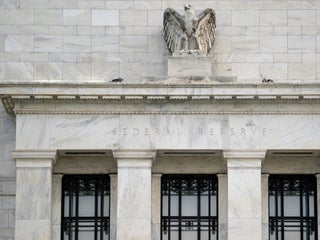Summary
Three letters — APR — can help you understand the ABCs of borrowing money with a credit card or another financial product.
The content on this page is accurate as of the posting date; however, some of our partner offers may have expired. Please review our list of best credit cards, or use our CardMatch™ tool to find cards matched to your needs.
Credit cards and various types of loans come with APRs, which stands for annual percentage rates. This is also referred to as credit card interest or an interest charge.
For credit cards, the APR is what you’ll wind up paying if you don’t pay off your monthly balance in full. APRs for credit cards and other lending products vary depending on the lender as well as the borrower’s circumstances. For example, issuers consider factors like your credit score when determining what APR they’ll offer. The better your credit score, the more likely you’ll receive a lower APR, which can translate into paying less for borrowing money.
What is APR?
APR stands for annual percentage rate. It refers to the annual cost of borrowing money, either with a credit card or a loan.
The interest rate is the basic amount, shown as a percentage, that a lender charges you to borrow money. For instance, a credit card might carry an APR of 19 percent, while a mortgage might offer an APR of 7 percent.
It’s important to note that a credit card APR does not include fees and other costs. On the other hand, the APR for mortgages, auto loans, student loans, personal loans and other lending products typically includes fees and additional costs.
How do credit card APRs work?
Fortunately, the math involved in calculating APRs isn’t as complicated as you might think.
First, let’s look at how a credit card issuer calculates APR. For credit card interest rates, the calculation starts with an index. A popular index to use is the U.S. prime rate (or prime lending rate). This rate is about 3 percentage points above the federal funds rate set by the Federal Reserve, which establishes U.S. monetary policy. The federal funds rate is the interest rate banks and credit unions charge each other to lend money on an overnight basis.
A credit card issuer then tacks on a margin, which is the percentage added to the prime rate or another type of index. The margin is typically tied to your credit score. A higher credit score usually results in a lower margin.
Types of credit card APRs
Among all lending products, credit cards have the most varied APRs. Loans typically come with just one kind of APR (although a homebuyer can get a mortgage with what’s known as an adjustable rate). With a credit card, you’ll find the following types of APRs:
- Purchase APR: The purchase APR is the rate you pay when you make purchases with your credit card. It’s typically the lowest APR that a credit card has.
- Cash advance APR: If you borrow cash with your credit card, you’ll pay the cash advance rate. It’s often higher than the purchase APR.
- Penalty APR: If you fail to follow the terms and conditions, a card issuer may hit you with a penalty APR. For instance, card issuers frequently charge a penalty APR when you make a payment after the due date. The penalty APR is usually higher than the purchase APR or cash advance APR.
- Introductory APR: For a limited time, a card issuer may offer a 0 percent intro APR so that cardholders can make purchases or transfer balances without paying interest.
What’s the difference between a fixed APR and a variable APR?
The index affects whether a credit card has a fixed APR or a variable APR.
A fixed-rate APR does not change when the index changes — a variable APR does. The cardholder agreement for your card explains how the APR can fluctuate based on the index and federal interest rates.
What is a good APR for a credit card?
A good credit card APR is below the average APR. Keep in mind that only people with excellent credit qualify for below-average APRs.
An above-average APR isn’t necessarily a bad thing. But the higher an APR is, the more you’ll pay for purchases, cash advances and other credit card transactions — unless you pay off your balance in full every month, thus avoiding interest charges altogether.
How can you lower your credit card APR?
Many credit card issuers will give you a lower APR if you ask. If you have a good credit score (above 700) and a history of on-time payments, you may have more success negotiating a lower interest rate with your credit card company. You may also be able to negotiate a lower interest rate if you’re experiencing financial hardship.
If you’re unable to negotiate a lower interest rate with your current credit card issuer, you can also try to find a balance transfer card with an introductory 0 percent intro APR. These temporarily interest-free cards allow you to transfer your balances from high-interest credit cards without paying any interest for a promotional period (typically six to 21 months).
Bottom line
It’s important to know how credit card APRs work, but it’s critical that you pay your balances every billing cycle to avoid interest charges and credit card debt altogether. That way, you’ll never be on the hook for added interest, which means you won’t pay more than the price of whatever you purchased.
Editorial Disclaimer
The editorial content on this page is based solely on the objective assessment of our writers and is not driven by advertising dollars. It has not been provided or commissioned by the credit card issuers. However, we may receive compensation when you click on links to products from our partners.




